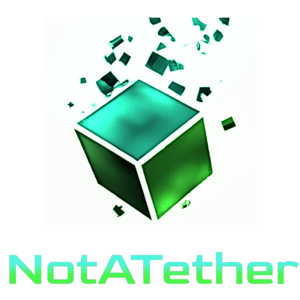What are Bitcoin transaction fees ?
For everyone making transactions in bitcoin, you would have wondered what are these bitcoin transaction fees all about. Sometimes the fees are very high and sometimes quite low, why did all this happen? I will explain to you here.
Every bitcoin transaction must be added to the blockchain, the official public ledger of all bitcoin transactions, to be considered completed or valid. The work of validating transactions and adding them to the blockchain is done by miners, powerful computers that make up and connect to the network. Miners spend vast amounts of computing power and energy doing this for a financial reward: with every block (a collection of transactions not exceeding 1 MB in size) added to the blockchain comes a bounty called a block reward, as well as all fees sent with the transactions that miners included in the block.
For this reason, miners have a financial incentive to prioritize the validation of transactions that include a higher fee. For someone looking to send funds and get a quick confirmation, the appropriate fee to include can vary greatly, depending on several factors. While the fee does not depend on the amount you’re sending, it does depend on network conditions at the time and the data size of your transaction.
Network Conditions
Because a block on the bitcoin blockchain can only contain up to 1 MB of information, miners can include a limited number of transactions in any given block. During times of congestion, when a large number of users are sending funds, there can be more transactions awaiting confirmation than there is space in a block.
When a user decides to send funds and the transaction is broadcast, it initially goes into the memory pool (mempool for short) before being included in a block. From this mempool, miners choose which transactions to include, prioritizing the ones with higher fees. If the mempool is full, the fee market may become a competition: users will compete to get their transactions into the next block by including higher and higher fees. Eventually, the market will reach a maximum equilibrium fee that users are willing to pay, and the miners will work through the entire mempool in order. At this point, once traffic has decreased, the equilibrium fee will go back down.
Transaction Size
Again since a block on the bitcoin blockchain can contain no more than 1 MB of information, transaction size is an important consideration for miners. Smaller transactions are easier to validate; larger transactions take more work and take up more space in the block. For this reason, miners prefer to include smaller transactions. A larger transaction will require a larger fee to be included in the next block.
The formula to calculate a transaction size by hand is quite complicated, but your wallet will automatically do this for you and suggest an appropriate fee.
So this was all about the Bitcoin transaction fee. But in Ethereum transactions, how must have heard or read about Gwei, and what is gas? We will talk about that now.
What Is Gas in Ethereum transactions?
Gas refers to the fee, or pricing value, required to successfully conduct a transaction or execute a contract on the Ethereum blockchain platform. Priced in small fractions of the cryptocurrency ether (ETH), commonly referred to as gwei and sometimes also called nanoeth, the gas is used to allocate the Ethereum virtual machine (EVM) resources so that decentralized applications such as smart contracts can self-execute in a secured but decentralized fashion.
The exact price of the gas is determined by supply and demand between the network’s miners – who can decide to process a transaction if the gas price does not meet their threshold – and users of the network who seek processing power.
Some key points
- On the Ethereum blockchain, gas refers to the cost necessary to perform a transaction on the network.
- Miners set the price of gas based on supply and demand for the computational power of the network needed to process smart contracts and other transactions.
- Gas prices are denoted in small fractions of ether called gwei.
- The value of gas for internal processing, which is distinct from how ether tokens value the actual valuation of the cryptocurrency, disaggregates the value layer and the processing layer of the Ethereum platgorm.
Ethereum developers introduced gas to maintain a distinct value layer that solely indicates the consumption towards computational expenses on the Ethereum network. Having a separate unit for this purpose allows for a practical distinction between the actual valuation of the cryptocurrency (ETH) and the computational cost of using Ethereum’s virtual machine (EVM). There, gas refers to the Ethereum network transaction fees, not the gasoline for your car.
Gas fees are payments made by users to compensate for the computing energy required to process and validate transactions on the Ethereum blockchain. “Gas limit” refers to the maximum amount of gas (or energy) that you’re willing to spend on a particular transaction. A higher gas limit means doing more work to execute a transaction using ETH or a smart contract.
To draw an analogy, running a real-world car for X miles may require Y gallons of fuel. Or moving X amount of money from your bank account to your friend’s credit card may cost you Y dollars in a processing fee. In both cases, X indicates the utility value, while Y indicates the cost of performing the car trip or financial transaction.
Similarly, a contract or transaction on Ethereum may be worth 50 ETH (x), and the gas price to process this transaction at that particular time might be, say, 1/100,000 ETH (Y).
Ethereum miners, who perform all the important tasks of verifying and processing transactions on the network, are awarded this particular fee in return for their computational services. If the gas price limit is too low, miners can choose to ignore such transactions. As such, the price of gas fluctuates (priced in ETH) with supply and demand for processing power.
Ethereum Virtual Machine (EVM)

The EVM can run smart contracts that can represent financial agreements such as options contracts, swaps, or coupon-paying bonds. People can also use it to execute bets and wagers, fulfill employment contracts, act as a trusted escrow to purchase high-value items, and maintain a legitimate decentralized gambling facility. These are just a few examples of what is possible with smart contracts, and the potential to replace all sorts of legal, financial, and social agreements is exciting.
Within the Ethereum ecosystem, ETH exists as the internal cryptocurrency, which is used to settle the outcomes of smart contracts executed within the protocol. ETH can be mined for and traded on cryptocurrency exchanges with bitcoin and fiat currencies such as U.S. dollars and is also used to pay for computational effort employed by nodes on its blockchain.
Soon, however, Ethereum plans to move to a Proof of Stake (PoS) based blockchain. In this model, miners would no longer exert computational power but instead rely on a consensus model according to how many coins a node holds.
Before you leave, why don’t you learn more topics like transaction fees at our Academy? We have guides for nearly every blockchain concept.


